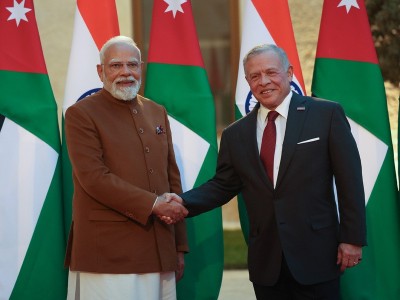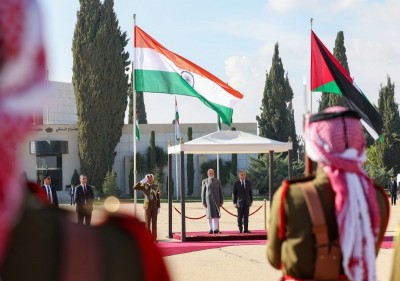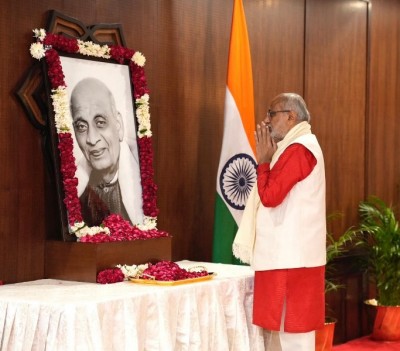India ranks 143 in Global Peace Index
Whilst India has seen no significant change in peace since last year, it has fallen in its rank by two places in this year's index.
The economic impact of containing and dealing with the consequences of India’s levels of violence was estimated to cost the national economy US$177 billion in 2013. This is equivalent to 3.6% of India’s GDP, or US$145 per person.
The research shows that India suffers chronically from international tensions and widespread internal conflict. While Maoist movements are one of the biggest threats to India’s internal security, sporadic conflict with its neighbours also threatens the country’s external security.
Internal Conflict Focus:
Policy paralysis has effected action which is likely to be addressed by the newly elected government with the existence of several ethnic groups, terrorist camps and state-level independence movements, threatening India’s internal peace. Corruption is rampant in Indian politics – as indicated by India’s low rank of 143 out of 162 on the Global Peace Index.
It has also come to light that the Maoist insurgency movement which boasts about 20,000 armed rebels is one of the strongest internal threats to India with attacks being carried out on security officers and civilians alike. In concurrence, India is ranked number 4 out of 159 countries in the Global Terrorism Index.
India’s diverse population and the recent emergence of the new state of Telangana have also resulted in several pockets of ethnic conflict. Despite its democratic credentials therefore, India scores poorly on the Political Terror Scale, 4 out of 5 (5 representing total state of suppression), thereby further nurturing the ground for political strife.
Defence Side View:
India’s spending on defence is among the highest in the world – according to a report released by the Stockholm International Peace Research Institute in March 2014This increase in defence spending can be mainly attributed to the strained relations between India and its neighbours – Pakistan, China & Bangladesh.
Steve Killelea, founder and Executive Chairman of the IEP said of the findings, “If India could improve its overall levels of peace, the dividend that would flow from this would substantially improve the country’s economic growth rates. This can be achieved by a renewed government focus on building the underlying qualities that create and sustain peaceful societies such as low levels of corruption, well-functioning government and equitable distribution of resources.”
India stands 5th in the South Asia region (Afghanistan, Bangladesh, Bhutan, India, Nepal, Pakistan, and Sri Lanka). South Asia remains at the bottom of the overall regional rankings; however its score did improve more substantially than any other region. All countries in South Asia improved their overall scores, especially their domestic peace.
Globally, terrorist activity, the number of conflicts fought, and the number of refugees and displaced persons were the key contributors to the continuing deterioration in worldwide peacefulness last year. This confirms a seven year gradual, but significant downward slide, which overturns a 60-year trend of increasing global peacefulness dating back to the end of the Second World War.
The economic impact of containing and dealing with the consequences of global violence last year was estimated to be US$9.8 trillion, according to the latest Global Peace Index (GPI) released on Wednesday. This is equivalent to 11.3% of global GDP – equal to twice the size of the 54 countries in the African economy.
Steve Killelea observed, “This is resulting in very real costs to the world economy; increases in the global economic impact of violence and its containment are equivalent to 19% of global economic growth from 2012 to 2013. To put this in perspective, this is around $1,350 per person. The danger is that we fall into a negative cycle: low economic growth leads to higher levels of violence, the containment of which produces lower economic growth.”
Methodology:
In attempting to gauge peacefulness, the GPI investigates the extent to which countries are involved in ongoing domestic and international conflicts. It also seeks to evaluate the level of harmony or discord within a nation; ten indicators broadly assess what might be described as safety and security in society.
Seven further indicators are related to a country’s military build-up—reflecting the assertion that the level of militarisation and access to weapons is directly linked to how peaceful a country feels, both domestically and internationally.
The report also examines the relationships between the GPI and many reliable international measures of democracy, transparency, education and material wellbeing. By doing so, the research ultimately attempts to understand the relative importance of a range of potential determinants, or drivers, which may influence the creation and nurturance of peaceful societies, both internally and externally.
The new methodology analyses a data set stretching back to 1996, and compares countries with the performance of states with similar institutional characteristics.
“What is transformational in this analysis is our ability to compare a country’s current level of peace with the potential for it to increase or decrease in violence in the future. A country’s potential for peace is shaped by many positive factors including sound institutions, well-functioning government, low levels of corruption and a pro-business environment which we call the Pillars of Peace. These models are revolutionary for assessing country risk; positive peace factors tend to align over longer periods of time with actual levels of violence thereby allowing real predictive accuracy,” said Steve Killelea.
“Given the deteriorating global situation we cannot be complacent about the institutional bedrocks for peace: our research shows that peace is unlikely to flourish without deep foundations. This is a wakeup call to governments, development agencies, investors and the wider international community that building peace is the prerequisite for economic and social development,” he added.
Global Highlights:
The ten countries most likely to deteriorate in peace in the next two years are Zambia, Haiti, Argentina, Chad, Bosnia and Herzegovina, Nepal, Burundi, Georgia, Liberia and Qatar
Global violence impacted the global economy by US$9.8 trillion or 11.3% of GDP in the last year, an increase of US$179 billion YOY, through upward revisions of China’s military expenditure and the number and intensity of internal conflicts
Volatility in inflation rates correlates strongly with levels of violence: countries in the top third of the index average one third the volatility in inflation rates of the bottom 50
Syria displaces Afghanistan as the world’s least peaceful nation while Iceland maintains its status as the most peaceful country in the world
Georgia showed the largest improvement in peace levels, while South Sudan experienced the largest drop and now ranks as the third least peaceful country
Africa is a tale of two continents with nations showing both large gains and deteriorations
Support Our Journalism
We cannot do without you.. your contribution supports unbiased journalism
IBNS is not driven by any ism- not wokeism, not racism, not skewed secularism, not hyper right-wing or left liberal ideals, nor by any hardline religious beliefs or hyper nationalism. We want to serve you good old objective news, as they are. We do not judge or preach. We let people decide for themselves. We only try to present factual and well-sourced news.







